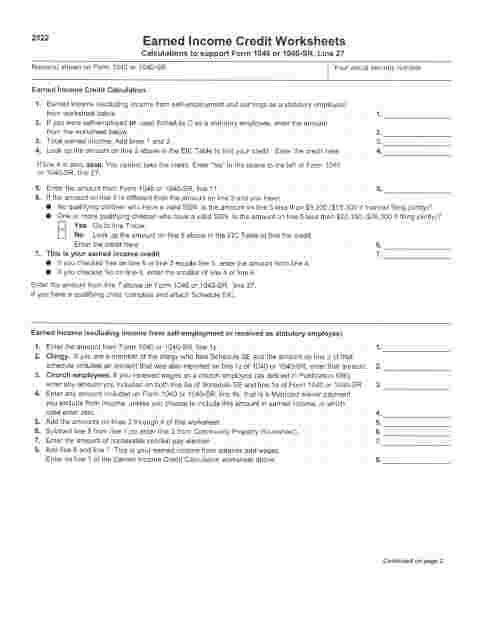The Earned Income Credit (EIC) is a tax credit for low- to moderate-income working individuals and families. It is a refundable credit, meaning that if the credit exceeds the amount of taxes owed, the excess is refunded to the taxpayer. The EIC was introduced in 1975 as part of the Tax Reduction Act, and since then it has undergone several changes and expansions.
The EIC is designed to provide a financial boost to working individuals and families with modest incomes. The credit is based on earned income and is available to those who meet certain eligibility requirements, including income limits and the number of qualifying children in the household. The amount of the credit varies depending on the taxpayer’s filing status, income, and number of qualifying children.
Eligibility for Earned Income Credit
To be eligible for the EIC, taxpayers must meet certain income requirements. The maximum income limits for the EIC depend on the taxpayer’s filing status, and they are adjusted annually for inflation. For the tax year 2022, the maximum income limits for the EIC are as follows:
- $15,980 for single filers with no qualifying children
- $42,158 for married filing jointly with no qualifying children
- $49,078 for single filers with one qualifying child
- $55,952 for married filing jointly with one qualifying child
- $55,952 for single filers with two or more qualifying children
- $62,822 for married filing jointly with two or more qualifying children
In addition to the income limits, taxpayers must also meet other eligibility requirements to claim the EIC. They must have earned income from employment or self-employment, and they must be a U.S. citizen or resident alien for the entire tax year. Taxpayers cannot claim the EIC if they file as married filing separately, or if they are claimed as a dependent on another person’s tax return.
The amount of the EIC depends on the taxpayer’s filing status, income, and number of qualifying children. For the tax year 2022, the maximum credit amounts are as follows:
- $543 for single filers with no qualifying children
- $1,502 for single filers with one qualifying child
- $3,618 for single filers with two or more qualifying children
- $608 for married filing jointly with no qualifying children
- $1,557 for married filing jointly with one qualifying child
- $3,887 for married filing jointly with two or more qualifying children
Criteria for Qualifying children
Qualifying children must meet certain criteria to be eligible for the EIC. They must be under the age of 19, or under the age of 24 if they are full-time students. They must also be a U.S. citizen, resident alien, or national, and they must have lived with the taxpayer for more than half of the tax year. Taxpayers can claim the EIC for up to three qualifying children.
The EIC has several benefits for low- to moderate-income working individuals and families. Moreover, the credit can help reduce or eliminate the tax liability for eligible taxpayers, and it can provide a refund to those who have no tax liability. The EIC can also help lift families out of poverty and provide a financial boost to help cover basic needs like housing, food, and healthcare.
In addition to the EIC, there are other tax credits and deductions available to low- to moderate-income taxpayers. The Child Tax Credit, for example, provides a credit of up to $2,000 per child for eligible taxpayers. The Child and Dependent Care Credit can provide a credit of up to $4,000 for eligible taxpayers who pay for childcare expenses. The Earned Income Credit, however, is one of the most valuable credits available to low- to moderate-income taxpayers.

